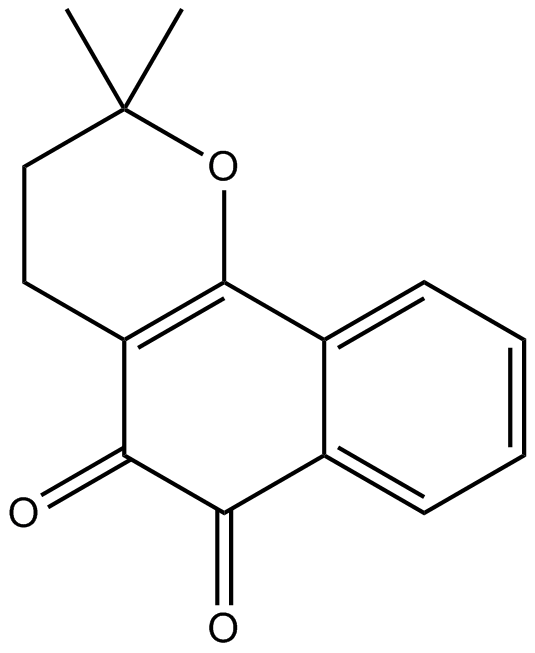Beta-Lapachone (Synonyms: ARQ 501, NSC 26326, NSC 629749, SL 11001) |
| Catalog No.GC10734 |
Beta-Lapachone (ARQ-501;NSC-26326) is a naturally occurring O-naphthoquinone, acts as a topoisomerase I inhibitor, and induces apoptosis by inhibiting cell cycle progression.
Products are for research use only. Not for human use. We do not sell to patients.

Cas No.: 4707-32-8
Sample solution is provided at 25 µL, 10mM.
Beta-Lapachone is an inhibitor of DNA topoisomerase I [1].
Beta-Lapachone is found to inhibit the activity of topoisomerase I in a DNA unwinding assay. It inhibits the relaxation at 1μM. The potency of beta-Lapachone can be increased when pretreating topoisomerase I with beta-Lapachone for 5 min at 37°C. Beta-Lapachone is selective for topoisomerase I and shows no inhibition activity for topoisomerase II. Besides, beta-Lapachone is also proved to have no induction in topoisomerase I mediated DNA cleavage [1].
Beta-Lapachone has anti-tumor efficacy in a broad spectrum of human carcinoma cells. It induces cell death of AD2780s, HT-29, DLD, G480 and MCF-7 with IC50 values of 2μM, 5μM, 5μM, 4μM and 2μM, respectively. It is found that beta-Lapachone induces cell death of both apoptosis and necrosis through releasing cytochrome C. Beta-Lapachone is also reported to affect cell cycle. It induces primarily S-phase arrest in SW480 cells, late S- and G2/M-phase arrest in SW620 cells and early S-phase arrest in DLD1 cells [2, 3].
References:
[1] Li CJ, Averboukh L, Pardee AB. beta-Lapachone, a novel DNA topoisomerase I inhibitor with a mode of action different from camptothecin. J Biol Chem. 1993 Oct 25;268(30):22463-8.
[2] Li YZ, Li CJ, Pinto AV, Pardee AB. Release of mitochondrial cytochrome C in both apoptosis and necrosis induced by beta-lapachone in human carcinoma cells. Mol Med. 1999 Apr;5(4):232-9.
[3] Huang L, Pardee AB. beta-lapachone induces cell cycle arrest and apoptosis in human colon cancer cells. Mol Med. 1999 Nov;5(11):711-20.
Average Rating: 5 (Based on Reviews and 11 reference(s) in Google Scholar.)
GLPBIO products are for RESEARCH USE ONLY. Please make sure your review or question is research based.
Required fields are marked with *




















